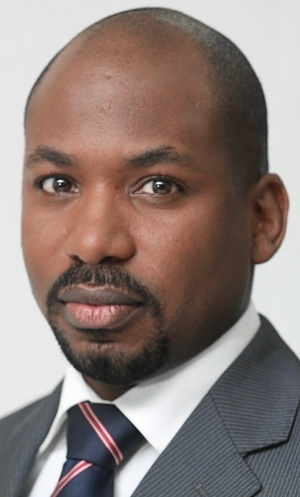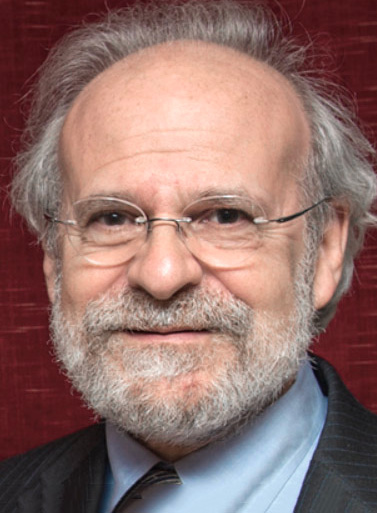

 In a recent blog post, Amazon invited developers to test drive its gigantic IoT network. This network has been labeled 'Sidewalk' and was created by tying together all of Amazon's wireless devices like Amazon Echos and Ring cameras. Amazon claims this huge wireless network now covers 90% of U.S. households. Amazon created the network by transmitting Bluetooth and 900 MHz LoRa signals from its various devices.
In a recent blog post, Amazon invited developers to test drive its gigantic IoT network. This network has been labeled 'Sidewalk' and was created by tying together all of Amazon's wireless devices like Amazon Echos and Ring cameras. Amazon claims this huge wireless network now covers 90% of U.S. households. Amazon created the network by transmitting Bluetooth and 900 MHz LoRa signals from its various devices.
 Caribbean islands are known for white-sand getaways, but one of the region's best-kept secrets remains buried under its picturesque beaches. That hidden treasure is the Caribbean's complex network of subsea Internet cables, worth their weight in gold because they connect these small-island nations to each other and to the global Internet. With that Internet connectivity comes the hope of a better life for millions of Caribbean citizens, and regional ambitions of global competitiveness.
Caribbean islands are known for white-sand getaways, but one of the region's best-kept secrets remains buried under its picturesque beaches. That hidden treasure is the Caribbean's complex network of subsea Internet cables, worth their weight in gold because they connect these small-island nations to each other and to the global Internet. With that Internet connectivity comes the hope of a better life for millions of Caribbean citizens, and regional ambitions of global competitiveness.
 OARC held a 2-day meeting in February, with presentations on various DNS topics. Here are some observations I picked up from the presentations in that meeting... In a world where every DNS name is DNSSEC-signed, and every DNS client validates all received DNS responses, we wouldn't necessarily have the problem of DNS spoofing. Even if we concede that universal use of DNSSEC is a long time off ...
OARC held a 2-day meeting in February, with presentations on various DNS topics. Here are some observations I picked up from the presentations in that meeting... In a world where every DNS name is DNSSEC-signed, and every DNS client validates all received DNS responses, we wouldn't necessarily have the problem of DNS spoofing. Even if we concede that universal use of DNSSEC is a long time off ...
 The IETF met in November 2022 in London. Among the many sessions that were held in that meeting was a session of the Decentralised Internet Infrastructure Research Group, (DINRG). The research group's ambitions are lofty: DINRG will investigate open research issues in decentralizing infrastructure services such as trust management, identity management, name resolution, resource/asset ownership management, and resource discovery.
The IETF met in November 2022 in London. Among the many sessions that were held in that meeting was a session of the Decentralised Internet Infrastructure Research Group, (DINRG). The research group's ambitions are lofty: DINRG will investigate open research issues in decentralizing infrastructure services such as trust management, identity management, name resolution, resource/asset ownership management, and resource discovery.
 When I was first advocating home networking at Microsoft, we encountered a problem. The existing systems and applications had implicitly assumed they were inside a safe environment and didn't consider threats from bad actors. Early Windows systems hadn't yet provided file system with access control and other protections though there were some attempts to have separate logins to keep some settings separate.
When I was first advocating home networking at Microsoft, we encountered a problem. The existing systems and applications had implicitly assumed they were inside a safe environment and didn't consider threats from bad actors. Early Windows systems hadn't yet provided file system with access control and other protections though there were some attempts to have separate logins to keep some settings separate.
 A curious price inversion has occurred in IPv4 markets. The long-term trend that discounted large blocks has reversed. The graph identifies /15 and /16 (large) block pricing per IP address throughout the period in the form of dark spots. It is evident that, for most of the timeframe here (2014 to the first half of 2021), large blocks sold at a significant discount. One might guess that the administrative chores related to large-network needs were most efficiently and cheaply satisfied with large blocks.
A curious price inversion has occurred in IPv4 markets. The long-term trend that discounted large blocks has reversed. The graph identifies /15 and /16 (large) block pricing per IP address throughout the period in the form of dark spots. It is evident that, for most of the timeframe here (2014 to the first half of 2021), large blocks sold at a significant discount. One might guess that the administrative chores related to large-network needs were most efficiently and cheaply satisfied with large blocks.
 2022 was not a normal year for me. We sold our company of almost 25 years to Interlan Gefle AB to Nordlo Group, and I also moved away from Gävle city to Boänge, a small rural village outside Sandviken where my ISP (AS20626) still isn't ready for IPv6 in my location.... ☹ ( I use a Mikrotik with a Wireguard tunnel to solve my IPv6 today.) It's 2023 when I'm writing this, and I can't understand why ISPs still haven't deployed IPv6!
2022 was not a normal year for me. We sold our company of almost 25 years to Interlan Gefle AB to Nordlo Group, and I also moved away from Gävle city to Boänge, a small rural village outside Sandviken where my ISP (AS20626) still isn't ready for IPv6 in my location.... ☹ ( I use a Mikrotik with a Wireguard tunnel to solve my IPv6 today.) It's 2023 when I'm writing this, and I can't understand why ISPs still haven't deployed IPv6!
 The Internet represents a threshold moment for the communications realm in many ways. It altered the immediate end client of the network service from humans to computers. It changed the communications model from synchronized end-to-end service to asynchronous and from virtual circuits to packet switching. At the same time, there were a set of sweeping changes in the public communications framework...
The Internet represents a threshold moment for the communications realm in many ways. It altered the immediate end client of the network service from humans to computers. It changed the communications model from synchronized end-to-end service to asynchronous and from virtual circuits to packet switching. At the same time, there were a set of sweeping changes in the public communications framework...
 The IETF held its 115th meeting in London in November 2022. This was another in the set of hybrid meetings with specific support for online attendees in addition to the normal face-to-face meetings for the week. In no particular order, here are a few of my impressions from the IETF meeting.
The IETF held its 115th meeting in London in November 2022. This was another in the set of hybrid meetings with specific support for online attendees in addition to the normal face-to-face meetings for the week. In no particular order, here are a few of my impressions from the IETF meeting.
 The latest technology on the horizon is the metaverse, which, stated simply, is the creation of online environments. While the primary focus of the metaverse is to create alternate realities, an application with a possible immediate big uptake is vertical presence for business meetings. Ciena, a manufacturer of fiber optic transmission equipment, recently did a survey worldwide of 15,000 business people to understand the interests and expectations of the metaverse.
The latest technology on the horizon is the metaverse, which, stated simply, is the creation of online environments. While the primary focus of the metaverse is to create alternate realities, an application with a possible immediate big uptake is vertical presence for business meetings. Ciena, a manufacturer of fiber optic transmission equipment, recently did a survey worldwide of 15,000 business people to understand the interests and expectations of the metaverse.